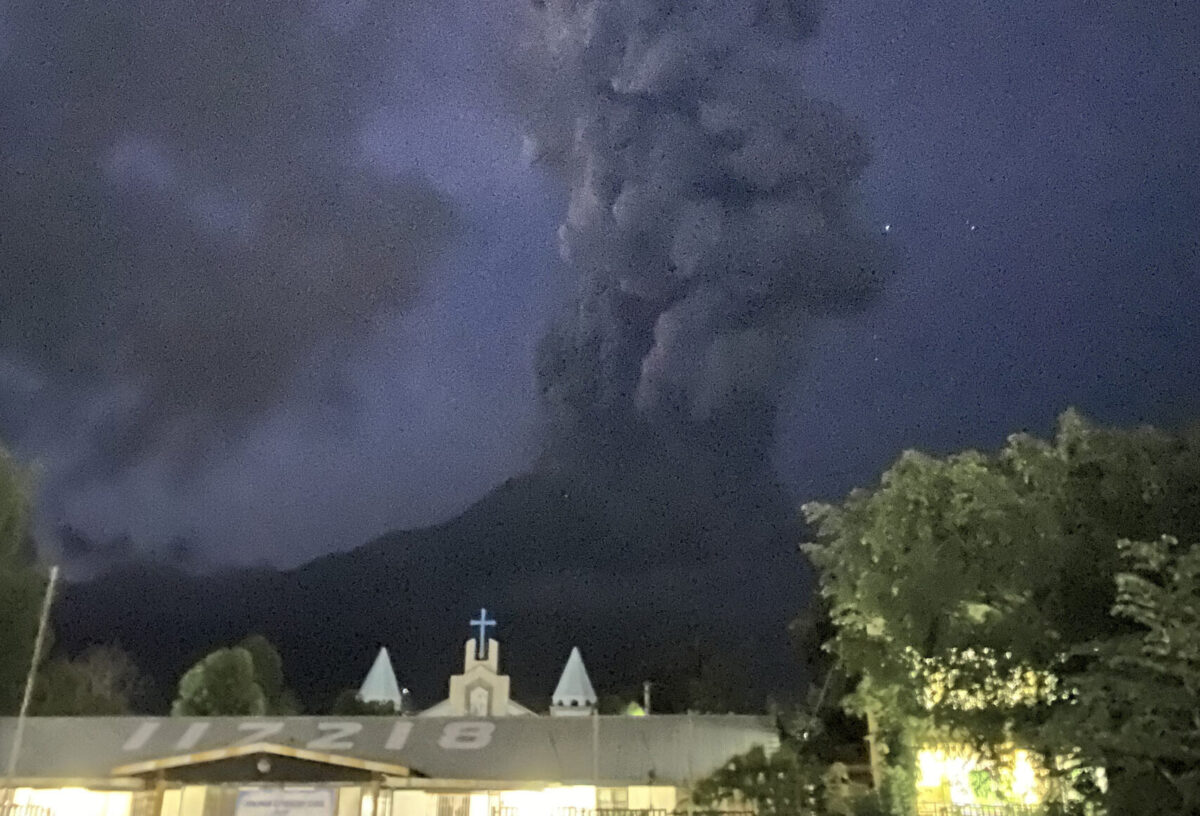
FILE PHOTO: A resident of La Castellana town in Negros Occidental province observes a relatively calm Mt. Kanlaon on Tuesday, June 4, 2024, a day after the volcano spewed ash and rocks and forced residents in communities around the volcano to flee. Agence France-Presse
MANILA, Philippines — The Kanlaon Volcano on Tuesday released its second-highest emission of sulfur dioxide this year, the state seismology bureau said.
READ: Phivolcs: Mt. Kanlaon gas emissions drop, but explosion possible
“Volcanic sulfur dioxide (SO2) gas emission from the summit crater of Kanlaon based on campaign Flyspec measurements today, 2 July 2024, averaged 5,083 tonnes/day. This is the second highest emission from the volcano recorded this year and the third since instrumental gas monitoring began,” the Philippine Institute of Volcanology and Seismology (Phivolcs) said in its advisory.
Phivolcs added that since Mt. Kanlaon’s eruption on June 3, sulfur dioxide emissions have increased to more than 3,250 metric tons per day.
“Kanlaon has been degassing increased concentrations of volcanic SO2 this year at an average rate of 1,273 tonnes/day prior to the 3 June 2024 eruption, but emission since then has been particularly elevated at a current average of 3,254 tonnes/day,” it explained.
The agency also said its observations point to magmatic processes under the volcano, which contribute to the unrest and the volcanic disturbances.
“The overall monitoring parameters indicate that magmatic processes beneath the volcano may be driving current unrest, causing persistently high concentrations of volcanic gas emission, swelling of the edifice, and occasional volcanic earthquake activity,” Phivolcs added.
READ: Kanlaon still ‘highly dangerous’ – Phivolcs
Currently, Kanlaon Volcano is under Alert Level 2, or a “moderate level of volcanic unrest,” Phivolcs said.
Phivolcs has cautioned people not to enter the volcano’s four-kilometer-radius Permanent Danger Zone, and to be prepared for possible ash fall and lahar flow events.